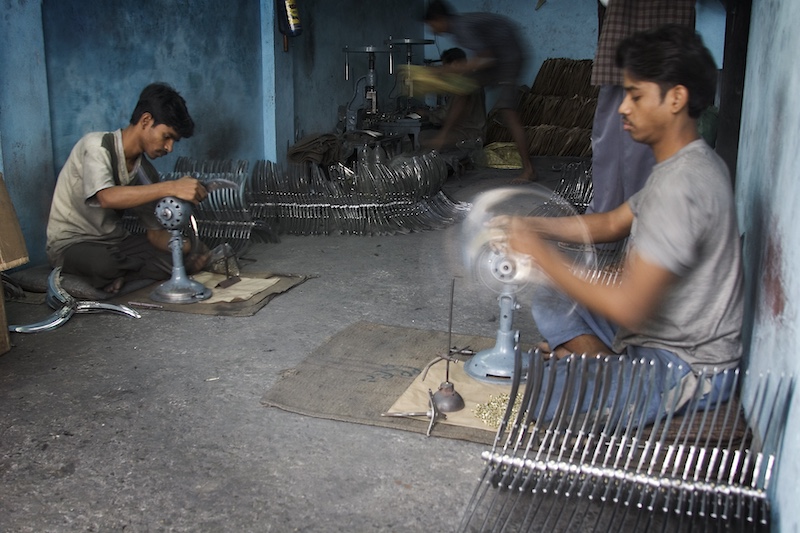When Omron opened its new Automation Center in Bengaluru last week, the announcement carried more than just local significance.
It was a statement of intent: India, with its vast (1.5 billion) population, rising manufacturing ambitions (fifth largest manufacturing nation in the world, according to the World Bank), and government support for Industry 4.0, is now firmly on the radar of global robotics and automation companies.
The question is whether India can become the next big market for robotics and automation systems – a kind of “next China” for global industry.
A giant hesitating to modernize
India is now almost as populous as China and has a growing industrial base. It has ambitions to raise manufacturing’s contribution to GDP from roughly 12 percent today to more than 20 percent in the coming decades.
Initiatives such as “Make in India” and investments by global players – including Apple’s decision to manufacture iPhones in India – suggest that change is already under way.
But the reality on factory floors is very different. For decades, Indian manufacturers have relied overwhelmingly on manual labour. This is largely because it has been cheaper than investing in robots or advanced automation systems. That calculus, however, may be shifting.
Robots are getting cheaper, easier to use, and quicker to deploy. Collaborative robots in particular have lowered barriers to entry by being simpler to install and requiring less specialized knowledge to operate.
At the same time, wages in India are rising, and companies are under pressure to meet higher standards of precision, quality, and productivity.
Robot density and global comparisons
India’s adoption of industrial robots has accelerated in recent years, but it still lags far behind other major manufacturing economies.
According to the International Federation of Robotics (IFR), India installed 8,510 new industrial robots in 2023, a 59 percent increase over the previous year.
That puts it seventh in the world for new installations – impressive growth, but modest compared with China, which installs hundreds of thousands annually.
India’s robot density (robots per 10,000 manufacturing workers) is around 7, compared with China’s 392 and South Korea’s 1,012. This huge gap illustrates both how far India has to go, and how much potential growth there could be if adoption accelerates.
The automotive factor
Globally, the automotive industry accounts for nearly half of all industrial robot purchases. Robots weld, paint, assemble, and inspect cars at levels of speed and precision human workers cannot match.
India has an automotive sector of its own – Tata Motors, Mahindra & Mahindra, Bajaj Auto, Hero MotoCorp, TVS, and others – and motorcycles in particular dominate India’s transport landscape.
But India’s automakers are not yet global giants in the way Chinese brands such as BYD or SAIC have become. One reason is the relative lack of large-scale automation and the cultural tolerance for variation in manufacturing.
Consumers in global export markets expect uniformity, precision, and reliability – qualities associated with robotic production lines.
Without committing to those standards, India’s automakers may struggle to compete internationally on the same scale as their Chinese counterparts.
Charm versus precision
There is a certain “organic” charm to Indian products. Walk through any bazaar or factory, and you may notice small differences between items that were supposed to be identical.
Each fan blade, each plastic casing, each stitched garment may have its quirks. Some see this as character, others as poor quality.
But global markets reward standardization and repeatability. A fan made by hand in a small Indian workshop may work fine locally, but to sell millions worldwide, each unit needs to be identical. Robots, by design, specialize in accuracy and consistency.
India must decide whether to hold on to its artisanal flexibility or embrace industrial precision.
The likely outcome is a dual track: traditional industries may retain their handcrafted identity, while high-growth sectors such as electronics, automotive, and medical devices embrace robotics to meet international demand.
The economics: People versus robots
For years, the assumption has been that human labour is cheaper in India. But is it still true? A collaborative robot can cost between $20,000 and $40,000 upfront, with operating costs spread over years of service.
In contrast, employing workers at even modest wages adds up over time – especially when factoring in benefits, training, and turnover.
A rough calculation:
- A worker earning $3,000 a year (a plausible figure for factory labour in India) costs $15,000 over five years.
- A robot costing $30,000 may replace two or three such workers, quickly justifying its expense – especially when operating continuously, with higher productivity and fewer errors.
This simple comparison shows that as robots get cheaper and wages rise, the economic argument for automation grows stronger.
Building the ecosystem
Cost is only one piece of the puzzle. India also needs infrastructure, training, integrators, and local support to sustain automation.
This is where centers like Omron’s in Bengaluru play a role – offering proof-of-concept labs, training programs, and collaborative spaces for manufacturers.
Companies like Universal Robots have also tried to build a presence, partnering with local machine tool firms to expand access to cobots.
These efforts are crucial in bridging the gap between global technology providers and India’s fragmented manufacturing base, which is dominated by small and medium-sized enterprises.
The road ahead
India’s opportunity is clear: with a population nearly equal to China’s and a massive domestic market for manufactured goods, it could be the next big frontier for robotics and automation.
But to get there, it will need to overcome entrenched reliance on cheap labour, invest in training and infrastructure, and foster a cultural shift toward precision and repeatability in manufacturing.
If these changes take hold, India may finally shake off its reputation for uneven quality and position itself as a serious competitor in global manufacturing.
The tide may indeed be turning – but whether India rides the wave or misses it will depend on choices made today in factories, boardrooms, and government offices.
Main image: An electric fan factory, Varanasi, India. Credit: Jorge Royan

